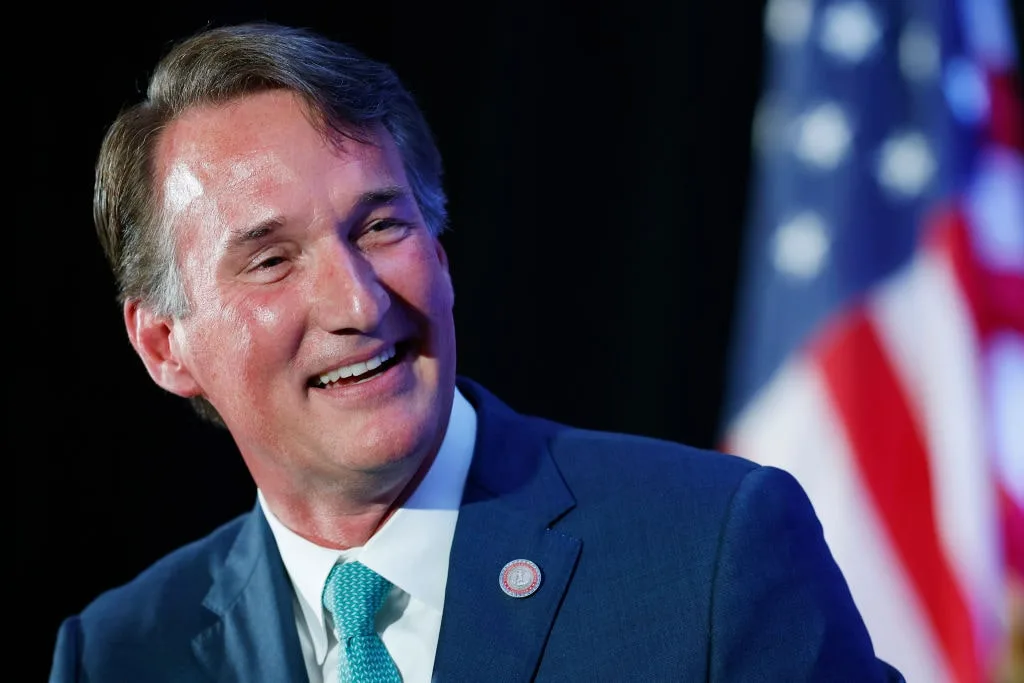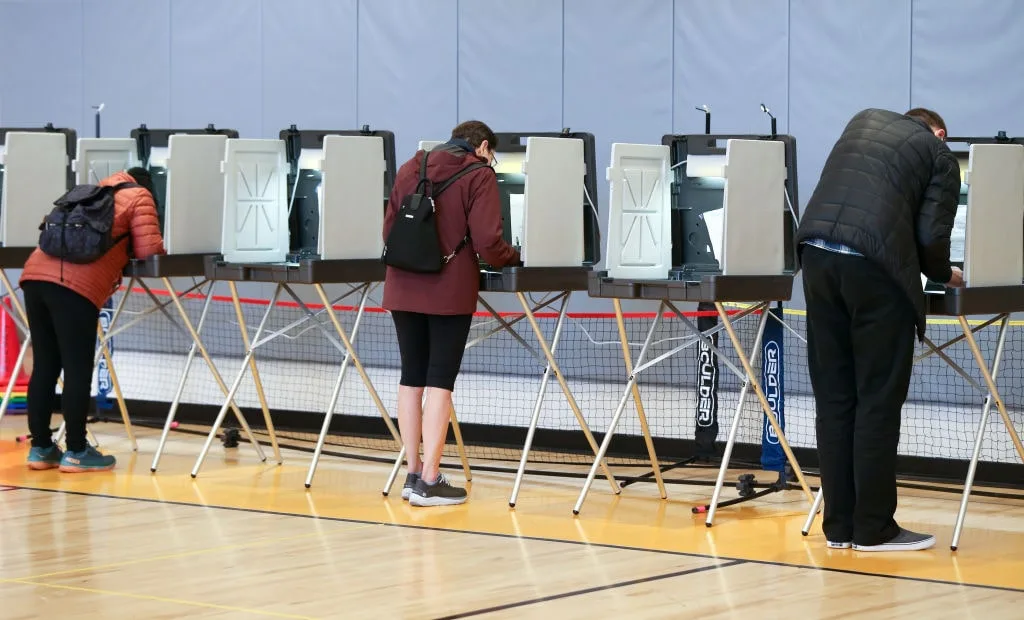Election Day 2023 fast approaches. Yes, you read that correctly: 2023. Everyone knows about presidential elections and the midterms, but so much of America is either unaware or just doesn’t care that many states also hold off-year elections. While about half the country has something on the ballot – from constitutional issues to municipal offices and school boards – Kentucky, Louisiana, Mississippi, New Jersey, and Virginia will fill some of the biggest elected roles at the state level.
Kentucky
 Kentucky’s keeping it simple this year, with no scheduled elections for state legislature, supreme court, or appellate courts, and no recalls or ballot measures. There are state executive, school board, and municipal government positions to be decided and a single special election to replace the late District 93 representative, Lamin Swann.
Kentucky’s keeping it simple this year, with no scheduled elections for state legislature, supreme court, or appellate courts, and no recalls or ballot measures. There are state executive, school board, and municipal government positions to be decided and a single special election to replace the late District 93 representative, Lamin Swann.
As is often the case in most off-year elections, the most highly watched race this year in the Bluegrass State is for governor. Incumbent Andy Beshear (a Democrat), faces off against Republican challenger Daniel Cameron, the attorney general. Though Beshear has the weight of incumbency holding him in place and is generally expected to win, Cameron is proving quite popular, and the race is close. Republicans have held the Kentucky House since 2017 and the Senate since 2000. When Beshear won in 2019, it broke a four-year trifecta that would return to the GOP should he become a one-term wonder.
Louisiana
Louisiana has 19 seats in the state House and two in the state Senate up for grabs this year along with eight executive offices, eight recalls, eight ballot issues, and a slew of municipal, school board, and appellate court elections to be decided. But the biggest news out of the Pelican State is the top executive position.
Republicans have held majorities in both chambers of the legislature since 2011, but Democrat John Bel Edwards has occupied the governor’s mansion since 2015. Edwards hit his term limit, however, and the Democrat who hoped to take up the mantle, Shawn Wilson, a doctor of public policy from New Orleans, fell short. Republican Jeff Landry, a former lawyer, police officer, and the state’s current attorney general, took 51.6% of the vote on October 14, narrowly avoiding the November 18 runoff and securing for the Republican party the first trifecta of political power held by either party in the state since the Democrats last ruled the roost in 2007.
Mississippi
State executives – including the governor – legislators, and school boards in Mississippi all have elections this year. The Magnolia State GOP enjoys a 76-40 lead in the state’s House, a 36-15 lead in the Senate, and has held a trifecta of power since 2012. But Mississippi faces a closer-than-anticipated gubernatorial race and all 122 House and 52 Senate seats are up for election. Recent history suggests Republicans will most likely keep control, but that’s hardly a certainty. Ballotpedia tracks party control over Governor, Senate, and House for the state since 1992. While Kentucky has only had a single Democrat governor in that 32-year span, Democrats held the Senate for 18 of those years and the House for 20. A significant flip, while unlikely, is neither impossible nor unprecedented.

Governor Glen Youngkin (Photo by Chip Somodevilla/Getty Images)
New Jersey and Virginia
The entirety of both chambers of the state legislatures of both New Jersey and Virginia are up for grabs this year, as are some school board and municipal positions – but that’s about where the similarities end.
New Jersey has nothing else going on this year, but it has been a solidly Democrat state for more than two decades. Republicans held a trifecta from 1994 to 2001, but after that, the only bit of control they managed to take back was Chris Christie’s run as governor from 2010 through 2018. The Senate was deadlocked in 2002 and 2003, but Democrats managed to hold it for 20 years straight, controlling the House for two more than that. They held a trifecta for the entire two decades short of Christie’s two terms as governor. The chance that Republicans will take back either chamber this year seems almost nonexistent.
In Virginia, on the other hand, there’s real potential. Republicans currently hold the state House 48-46 with six vacancies, while Democrats hold the Senate 22-18. For either chamber to flip, just a handful of seats must go to the current minorities – something that has happened a few times over the last few decades. With conservative Glenn Youngkin champing at the bit to put more of his agenda in action, 2023 proves to be a high-stakes off-year election for Old Dominion.
Off-Year Elections – More Than Meets the Eye
The first thing that must be said of off-year elections is the obvious: Turnout is typically low – like really low. Generally speaking, presidential election cycles get the most attention, followed not-so-closely by midterms. Without any federal attention, however, these state and local-only elections are often ignored or forgotten. A chart from the US Election Project shows that national turnout has hovered between about 50% and 70% for presidential elections since the early 1900s. Midterms, however, ranged between about 30% and 50% across that same span. According to University of California San Diego Professor of Political Science Zoltan L. Hajnal, only about 27% of eligible voters show up for municipal elections. Kentucky, for example, saw a 60.3% turnout in the 2022 midterm, but only 30.6% and 44.2% in 2015 and 2019, respectively – the latter being one of the highest off-year rates in recorded history.
Contrary to what the majority of voters seem to believe, however, these off-year elections are far from trivial. Not only do these they determine who holds the offices that are likely to be far more important to the daily lives of any given state’s voters, but they also allow statewide issues to shine and might even prove valuable to the campaign strategies of candidates in the much more glamorous elections just a year later.
Abortion, for example, has become a central issue to the legislative races in Virginia, with Governor Youngkin stumping for his fellow Republicans in hopes of keeping the House and taking the Senate to pass a 15-week ban. Governor Beshear has used the issue in Kentucky against Attorney General Cameron, who is running as a “pro-life” candidate – and he’s likely taking that approach in mostly red Kentucky because he knows that voters rejected an amendment to the state’s constitution last year that would have clarified that abortion access isn’t constitutionally protected.
Voters in Ohio will also consider the issue this year by deciding on whether to amend their constitution to protect abortion access. The successes and failures across these states will show presidential, congressional, and even statewide candidates elsewhere running in 2024 just where the people stand on the issue of abortion – or any other strategy taken by a 2023 candidate – at least in those states. This arguably provides valuable strategic data for essentially the entire final year of campaigning, granting time to pivot should a particular message prove unpopular.
And, of course, there’s no riding the coattails of a presidential or congressional candidate. For that matter, with such low voter turnout and the dearth of national advertising, folks are less likely to vote for a candidate or issue because their favorite celebrity said they should. Instead, candidates and issues are more likely to be decided on their own merits by the smaller percentage of dedicated voters who actually put in the modicum of work required – maybe a couple of hours of research on-cycle and an hour, tops, for off years – to make informed decisions.




